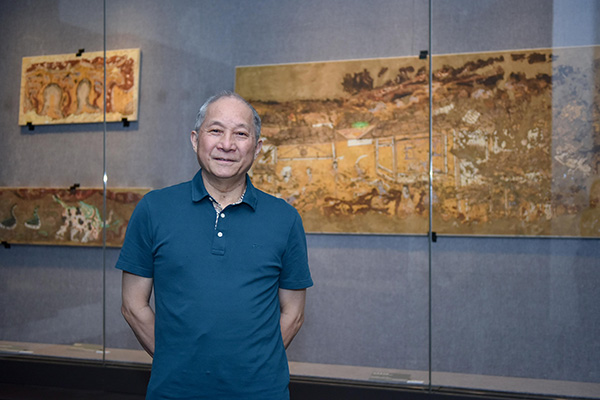 |
|
Zhou Tianyou, director of the Xi'an Qujiang Museum of Fine Arts.[Photo provided to China Daily] |
So, how does this kind of art display influence visitors?
Speaking about the exhibition, Zhou, 74, says: "When viewers see the murals, they not only appreciate the beautiful paintings, but also understand the lifestyles of people from different Chinese dynasties."
Pointing to two murals, which depict livestock trading from the Northern Wei Dynasty (386-534), he says: "The murals, which have vibrant scenes of daily lives, are a different way to communicate."
Murals have a long history in China, says Zhou, adding that the art form advanced remarkably in the Han Dynasty (206 BC-AD 220).
But he says that it reached its first peak in terms of style, technique and subject matter in the Tang Dynasty (618-907), when China enjoyed national unity, economic prosperity, cultural advancement and increased exposure to foreign cultures.
He says murals were a common sight in Tang imperial palaces, high-ranking officials' residences, and Buddhist and Taoist temples and caves.
And the murals portrayed a variety of subjects, such as mysterious creatures, animals, architecture, religion, as well as scenes of everyday life.
Speaking about the museum, he says: "Its function is to make history relevant for everyone who visits, and to make each individual think about how that knowledge can be relevant to their life. "Murals are easy to understand and they explain a lot," he says.